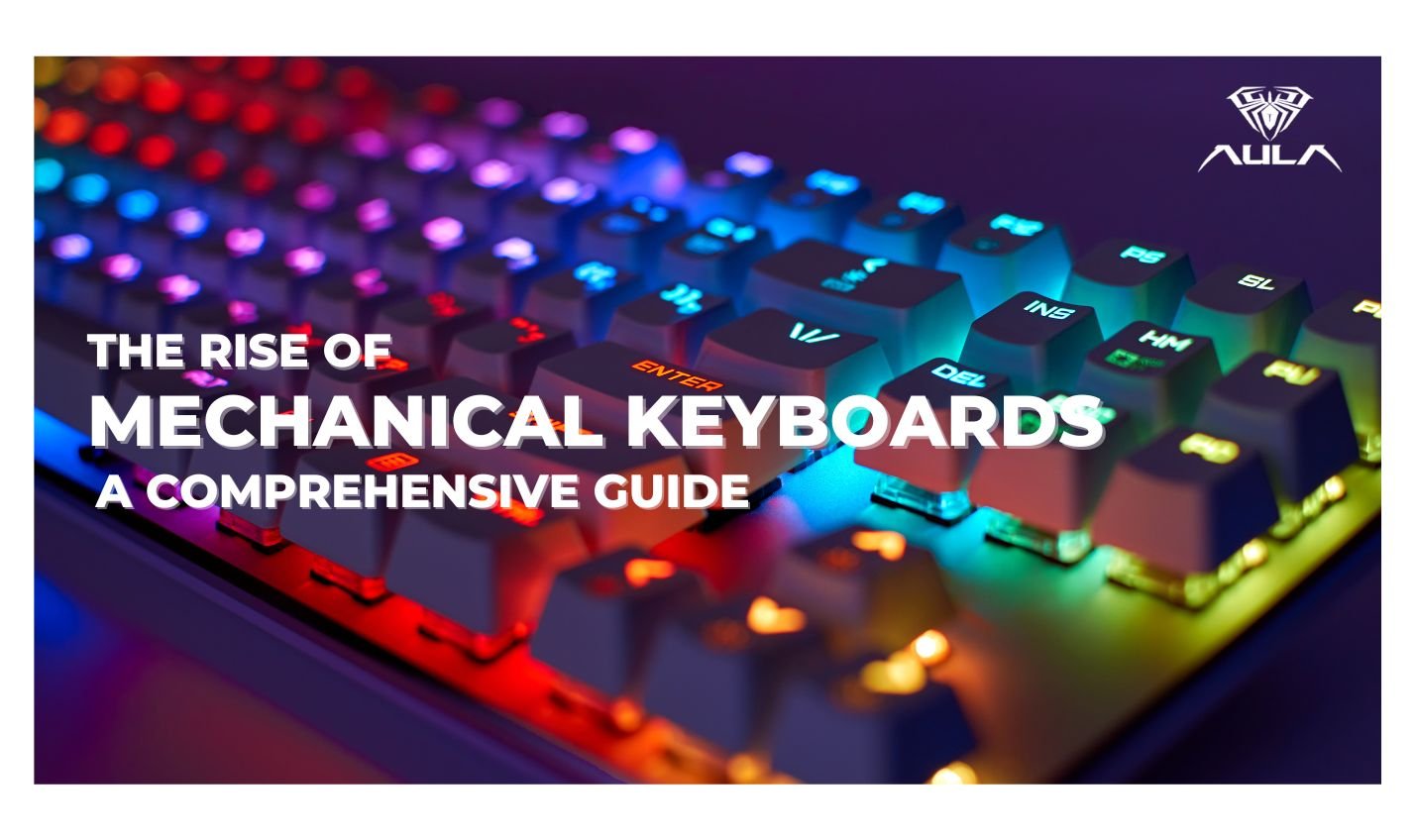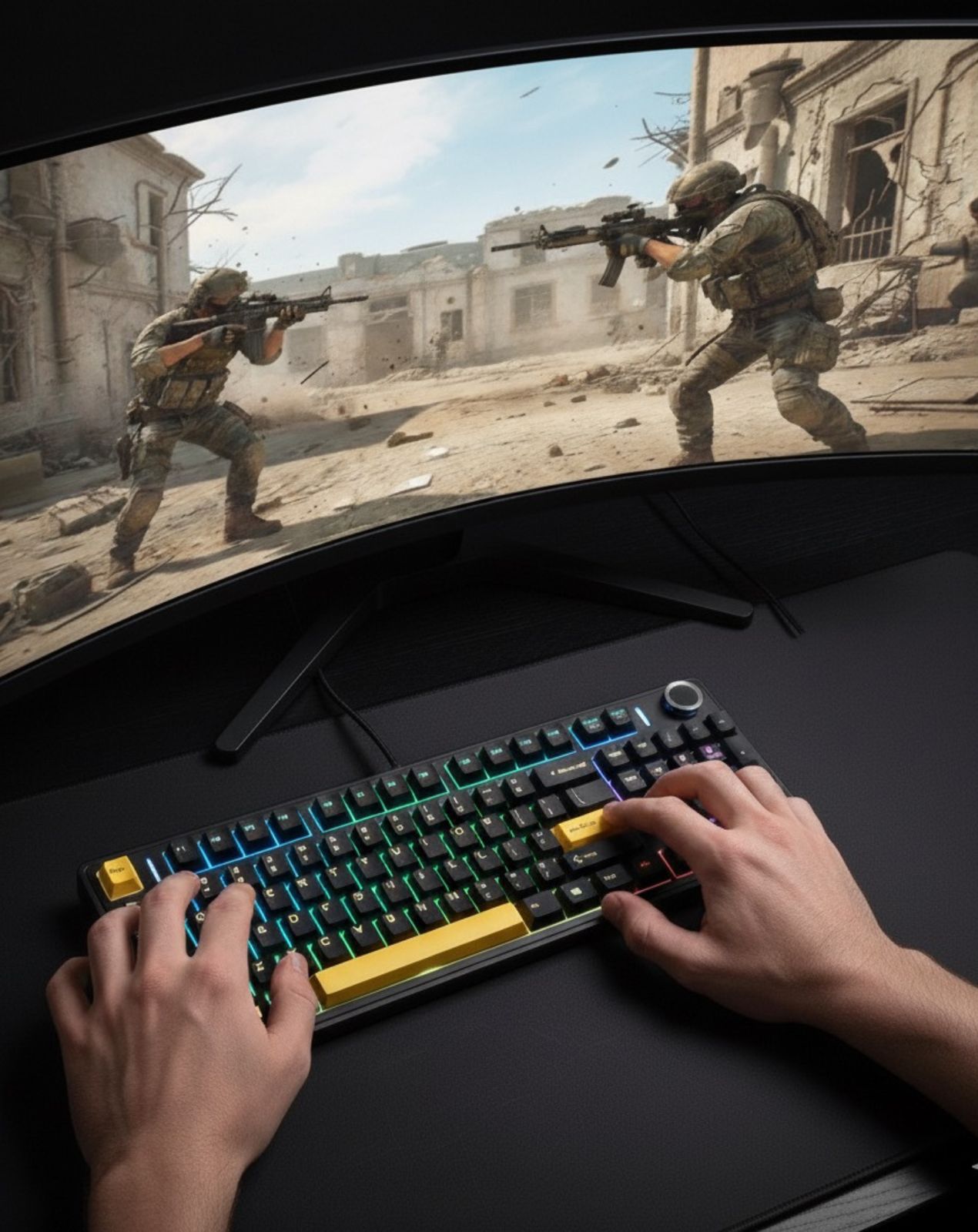In the world of keyboards, there’s a type that stands out among the rest for its tactile feedback, durability, and customization options: the mechanical keyboard. Once a niche product favored by enthusiasts and typists, mechanical keyboards have seen a remarkable rise in popularity in recent years. Let’s delve into the world of mechanical keyboards, exploring their history, benefits, different switch types, and why they’ve become a favorite among gamers, programmers, and typing enthusiasts alike.
The Evolution of Keyboards: A Brief History
To understand the significance of mechanical keyboards, it’s essential to look back at the history of keyboards. The earliest keyboards were based on mechanical technology, utilizing individual switches for each key. These switches provided a satisfying tactile response and audible click with each press. However, as technology advanced, membrane keyboards became the norm due to their lower cost and simpler design.
It wasn’t until the resurgence of interest in mechanical keyboards that these older, more robust designs began to gain traction once again. Enthusiasts rediscovered the joy of typing on a keyboard that offered a unique feel and sound, sparking a revival in mechanical keyboard popularity.
What Sets Mechanical Keyboards Apart
So, what makes mechanical keyboards so special? Let’s break down the key features that set them apart from their membrane counterparts:
- Tactile Feedback: One of the most notable features of mechanical keyboards is the tactile feedback. With each key press, you feel a satisfying bump, letting you know the key has been activated. This feedback is not only enjoyable but can also improve typing accuracy and speed.
- Durability: Mechanical keyboards are built to last. The individual switches are rated for tens of millions of keypresses, far outlasting the lifespan of membrane keyboards. This durability makes them a wise investment for those who spend a lot of time typing or gaming.
- Customization: Mechanical keyboards offer a level of customization that is unmatched. From different switch types to keycap materials and colors, enthusiasts can tailor their keyboard to suit their preferences perfectly. This customization aspect has given rise to a vibrant community of keyboard enthusiasts who swap tips, tricks, and photos of their personalized setups.
- Typing Experience: Whether you’re a writer, programmer, or avid gamer, the typing experience on a mechanical keyboard is unparalleled. The tactile feedback and distinct sound of each keypress create a rhythm that many find both satisfying and productive.
Exploring Mechanical Keyboard Switches
A key aspect of mechanical keyboards is the variety of switch types available. These switches determine the feel, sound, and actuation force of each key. Here are some popular switch types:
- Cherry MX: Perhaps the most well-known mechanical switch, Cherry MX switches come in several variations. Cherry MX Red offers a smooth linear feel, ideal for gaming. Cherry MX Blue provides a tactile bump and audible click, perfect for typists who enjoy the feedback. Cherry MX Brown strikes a balance between the two, offering tactile feedback without the loud click.
- Gateron: Gateron switches are often compared to Cherry MX switches but are smoother and generally more affordable. Gateron Reds are similar to Cherry MX Reds, Gateron Blues are comparable to Cherry MX Blues, and so on. Many enthusiasts appreciate Gateron switches for their value and smooth keystrokes.
- Razer: Razer’s mechanical switches, such as the Razer Green and Razer Orange, are designed with gamers in mind. Razer Greens offer a tactile bump and clicky sound, while Razer Oranges provide a quieter, tactile experience.
- Topre: Topre switches are known for their unique feel, combining elements of mechanical and rubber dome switches. They offer a smooth, tactile typing experience that some users find addictive.
Mechanical Keyboards in Gaming
The gaming community has embraced mechanical keyboards for several reasons. The tactile feedback of mechanical switches provides gamers with precise feedback, ensuring that each keypress is registered. This can be crucial in fast-paced games where split-second decisions make all the difference.
Additionally, the durability of mechanical keyboards means they can withstand intense gaming sessions without the risk of keys becoming unresponsive over time. Many gaming keyboards also come with features such as customizable RGB lighting, programmable keys, and macro functionality, further enhancing the gaming experience.
Mechanical Keyboards for Typing Enthusiasts
For writers, programmers, and anyone who spends a significant amount of time typing, a mechanical keyboard can make a world of difference. The tactile feedback not only feels satisfying but also provides confirmation that each key has been activated. This can lead to improved typing speed and accuracy over time.
Furthermore, the customization options of mechanical keyboards allow users to create a setup that suits their specific needs. Whether it’s a quieter switch for a shared workspace or a colorful keycap set for a touch of personal flair, the possibilities are endless.
Maintaining Your Mechanical Keyboard
To ensure your mechanical keyboard stays in top condition, regular maintenance is key. Here are some tips:
- Cleaning: Dust and debris can accumulate over time, affecting the feel of your keys. Use compressed air to blow out any particles, and gently clean the keycaps with a damp cloth.
- Keycap Removal: Some keyboards allow you to remove the keycaps for deeper cleaning. Use a keycap puller or gently pry them off with a flat tool, being careful not to damage the switches.
- Lubrication: If your switches feel scratchy or rough, applying a small amount of switch lubricant can help restore smoothness. However, this should be done sparingly and with caution.
- Regular Use: Surprisingly, regular use can also help keep your keyboard in good condition. The constant actuation of switches prevents them from becoming stiff or unresponsive.
The Future of Mechanical Keyboards
As the demand for mechanical keyboards continues to grow, we can expect to see further innovations in design, materials, and switch technology. Manufacturers are constantly refining their products to meet the needs of a diverse user base, from hardcore gamers to office professionals.
Whether you’re drawn to the tactile feedback, durability, or customization options, there’s no denying the appeal of mechanical keyboards. As more people discover the joys of typing on a well-crafted keyboard that suits their preferences, the rise of mechanical keyboards shows no signs of slowing down.
In conclusion, mechanical keyboards have come a long way from their humble beginnings, experiencing a resurgence in popularity due to their unique features and benefits. From the satisfying tactile feedback to the wide range of switch options, there’s a mechanical keyboard out there for everyone. Whether you’re a gamer, writer, programmer, or simply someone who appreciates a well-designed tool, investing in a mechanical keyboard can elevate your typing experience to new heights.
In conclusion, the rise of mechanical keyboards marks a significant shift in the world of typing and gaming peripherals. As explored in this comprehensive guide, these keyboards offer a plethora of benefits including tactile feedback, durability, customization options, and a superior typing experience. From the history of keyboards to the various switch types and their applications in gaming and professional settings, mechanical keyboards have captivated a diverse audience. Whether for increased productivity, gaming precision, or sheer enjoyment of typing, the appeal of mechanical keyboards at Aula India is undeniable. As technology advances and innovation continues, the future of mechanical keyboards looks bright, promising even more exciting developments for keyboard enthusiasts.




